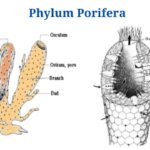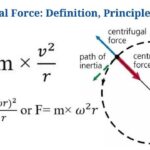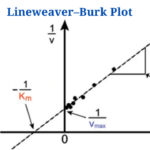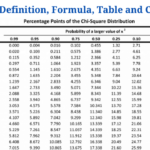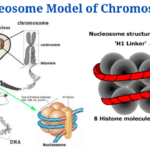Transcription Definition (What is Transcription in Biology)
Transcription is the process of transferring genetic information from a DNA strand to an RNA strand through a sequence of polymerization processes catalysed by DNA-dependent RNA polymerases.
- The information is passed on from one structure to another in the first phase of gene expression.
- RNA molecules are begun, elongated, and terminated during transcription. The RNA that is produced is non-genetic RNA.
- Transcription is required for translation and happens when a specific gene product is required at a certain time for a specific tissue.
- During transcription, just one strand of DNA, known as the template strand, is reproduced.
- Gene transcription takes place near the gene’s chromosomal site, which is usually a short piece of the chromosome.
- The enzyme DNA-dependent RNA polymerase catalyses and regulates the overall transcription process, which is a highly controlled process.
- The first step is to recognise certain DNA regions known as promoter sequences, which mark the start of a gene.
- The separation of two strands of DNA is subsequently followed by RNA polymerase replication of one of the strands.
- Eukaryotes have a distinct and more complicated RNA polymerase than prokaryotes.
- Because the process follows the complementary base pairing requirements of DNA, the sequence generated after replication is complementary to the template sequence, with the exception that thymine is substituted by uracil.
- The whole process in prokaryotes is regulated by proteins that act as signals or operators and then physically stop the RNA polymerase after the process is complete.
- Various proteins known as transcription factors play a role in the regulation of transcription in eukaryotes.
- Furthermore, in eukaryotes, the pre-mRNA (the result of transcription) is modified by the splicing process before the mature mRNA reaches the ribosomes for translation.
- During the translation process, the mRNA generated serves as a blueprint for protein synthesis.
- RRNA and tRNA synthesis can take place depending on the DNA sequence used for transcription.
- Transcription takes place in the nuclei of eukaryotes and the cytoplasm of prokaryotes, where enzymes and transcription factors are present.
- Some antibiotics, such as rifampicin and 8-Hydroxyquinoline, block it.
- RT-PCR, DNA microarray, in-situ hybridization, and northern blotting can all be used to detect the process.
Image Created with BioRender.com
What is PhD : Meaning, How to Do, Benefits, Full Details
Definition of Translation (What is Translation in Biology ?)
The process of protein synthesis in which the information on RNA is expressed in the form of polypeptide chains is known as translation.
- The information encoded on the mRNA sequence is translated into an amino acid sequence in the second and last step of gene expression.
- The mRNA produced during the transcription of a certain DNA sequence serves as the beginning point for translation. As a result, transcription is followed by translation.
- Although the information on the mRNA is used to generate the amino acid sequence, other types of RNA, such as tRNA, are also required.
- Translation, like transcription, is governed by a variety of factors and enzymes, the most significant of which is aminoacetyl tRNA synthetase.
- The initiation stage of translation begins with the binding of mRNA to ribosomes, followed by the transfer and binding of active amino acids to tRNA.
- Elongation is the second phase, in which two amino acids are linked by a peptide bond while the mRNA and ribosomes move in relation to one another to guarantee that codons are translated sequentially.
- The resultant polypeptide sequence is detached from the translation complex once all of the codons have been translated, and the ribosomes are liberated to begin another translation process.
- After termination, the polypeptide must be folded into a three-dimensional shape, which requires post-translation modification. The polypeptide chains are transported to the cell’s endoplasmic reticulum and Golgi apparatus as a result of this process.
- Other peptide modifications are chemical in origin and include the addition of functional groups to the sequence.
- The binding of ribosomal subunits to the translation complex controls the translation process. Ribosomes act as enzymes that regulate a variety of processes.
- Translation takes place in the ribosomes associated with the endoplasmic reticulum in eukaryotes and the cytoplasm in prokaryotes.
- Antibiotics such as tetracycline, chloramphenicol, streptomycin, erythromycin, anisomycin, cycloheximide, and others block translation.
- Similarly, technologies such as western blotting, immunoblotting, enzyme assays, protein sequencing, and others can be used to detect the translation process.
Difference between Transcription and Translation
(Transcription vs Translation)
| Basis for Comparison | Transcription | Translation |
| Definition |
Transcription is the process of transferring genetic information from a DNA strand to an RNA strand through a sequence of polymerization processes catalysed by DNA-dependent RNA polymerases. |
The process of protein synthesis in which the information on RNA is expressed in the form of polypeptide chains is known as translation. |
| Gene expression |
The initial stage in gene expression is transcription. |
The second and final step in gene expression is translation. |
| Occurs |
Before translation, there is transcription. |
Transcription is followed by translation. |
| Precursor |
The non-coding or antisense DNA strand is the first step in transcription. |
The mRNA created during transcription is the precursor of translation. |
| Raw material | Adenine, guanine, uracil, and cytosine are the four base pairs of RNA used in transcription. | The raw materials for translation are the twenty amino acids. |
| Initiation | Recognition of particular DNA sequences known as promoter sequences triggers transcription, which marks the start of the gene. |
The binding of mRNA to the ribosomes starts the translation process. |
| Elongation | The binding of complementary base pairs to the new sequence results in the elongation of RNA sequences. |
The binding of amino acids causes protein to elongate. |
| Product | The mRNA molecule, which is complementary to the DNA strand, is the result of transcription. | The peptide sequences generated from the mRNA sequence are the end product of translation. |
| Synthesis of |
RNA sequences are synthesised as a result of transcription. |
Proteins are synthesised as a result of translation. |
| Site | In eukaryotes, transcription takes place in the nucleus, but in prokaryotes, it takes place in the cytoplasm, where enzymes and regulatory factors are present. |
In prokaryotes, translation takes place in the cytoplasm, while in eukaryotes, it takes place in the ribosomes of the endoplasmic reticulum. |
| Enzymes |
DNA-dependent RNA polymerase is one of the most important transcription enzymes. |
Aminoacetyl tRNA synthetase is the most important enzyme for translation. |
| Regulation | In eukaryotes, transcription is controlled by transcription factors, while in prokaryotes, transcription is controlled by operons. |
The binding of ribosomal units to the translation complex is primarily responsible for translational regulation. |
| Post-event modifications |
Splicing of pre-mRNA (the result of transcription) before the mature mRNA reaches ribosomes for translation is an example of post-transcriptional alterations. |
The folding of polypeptide chains to obtain a three-dimensional structure is a post-translational modification. |
| Detection |
RT-PCR, DNA microarray, in-situ hybridization, and northern blotting can all be used to detect the process. |
Similarly, technologies such as western blotting, immunoblotting, enzyme assays, protein sequencing, and others can be used to detect the translation process. |
| Inhibition | Some antibiotics, such as rifampicin and 8-Hydroxyquinoline, block it. | Antibiotics such as tetracycline, chloramphenicol, streptomycin, erythromycin, anisomycin, cycloheximide, and others block translation. |
Click Here for Complete Biology Notes
Transcription vs Translation Citations
- https://www.britannica.com/science/transcription-genetics
- https://www.nature.com/scitable/topicpage/ribosomes-transcription-and-translation-14120660/
- https://www.biologydiscussion.com/organism/eukaryotes/translation-in-eukaryotes-genetics/37991
- https://en.m.wikipedia.org/wiki/Translation_(biology)
- https://en.m.wikipedia.org/wiki/Eukaryotic_transcription
- https://answers.yahoo.com/question/index?qid=20110608063923AAK4jjJ
- https://www.thermofisher.com/us/en/home/references/ambion-tech-support/northern-analysis/tech-notes/strategies-for-detecting-mrna.html
- https://www.sparknotes.com/biology/molecular/posttranscription/summary/
- https://www.slideshare.net/ranajni_09/transcription-63335595
- https://www.slideshare.net/queenmalik/translation-in-eukaryotes-59460659
- https://www.sciencedirect.com/science/article/pii/B9780123971692001116
- https://www.coursehero.com/file/pmekpb/cytoplasm-In-eukaryotes-transcription-occurs-in-the-nucleus-and-translation/
- https://www.biologydiscussion.com/proteins/protein-synthesis/protein-synthesis-translation-with-diagram/16461
- https://www.bartleby.com/essay/The-Process-of-Gene-Expression-F3R3TDEC8B6A
- https://gohighbrow.com/endoplasmic-reticulum-and-golgi-apparatus-the-added-value-on-protein-synthesis/
Related Posts
- Phylum Porifera: Classification, Characteristics, Examples
- Dissecting Microscope (Stereo Microscope) Definition, Principle, Uses, Parts
- Epithelial Tissue Vs Connective Tissue: Definition, 16+ Differences, Examples
- 29+ Differences Between Arteries and Veins
- 31+ Differences Between DNA and RNA (DNA vs RNA)
- Eukaryotic Cells: Definition, Parts, Structure, Examples
- Centrifugal Force: Definition, Principle, Formula, Examples
- Asexual Vs Sexual Reproduction: Overview, 18+ Differences, Examples
- Glandular Epithelium: Location, Structure, Functions, Examples
- 25+ Differences between Invertebrates and Vertebrates
- Lineweaver–Burk Plot
- Cilia and Flagella: Definition, Structure, Functions and Diagram
- P-value: Definition, Formula, Table and Calculation
- Nucleosome Model of Chromosome
- Northern Blot: Overview, Principle, Procedure and Results

